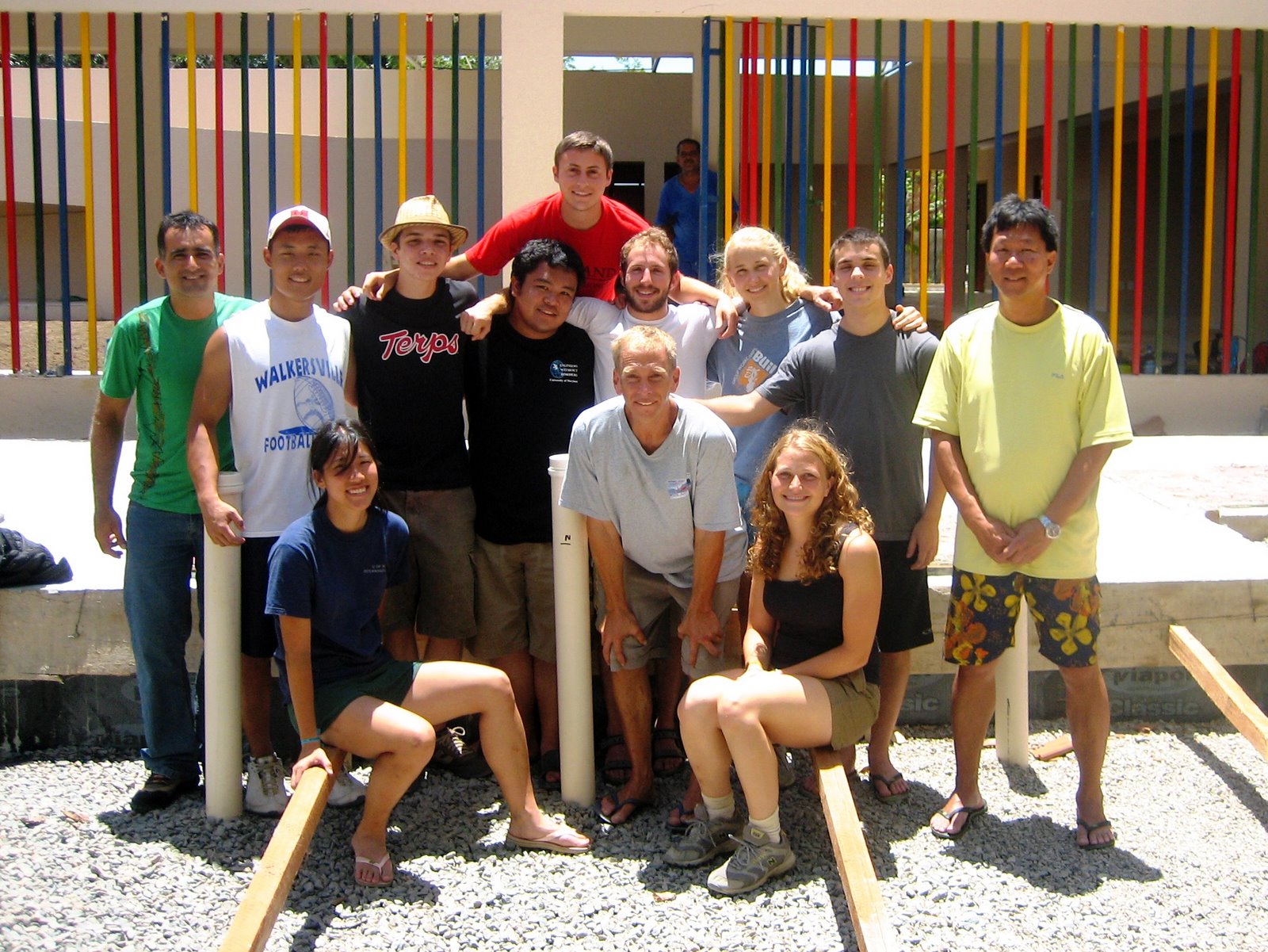The Need
The community of Bebedouro and Santa Amelia lacks clean waste removal. Due to the lack of infrastructure in these communities, waste is often disposed into the water without any sort of treatment. Most other waste is either dumped in the local lagoon or washed away when it rains. The lack of treatment negatively impacts the children, both biologically and environmentally.
The EWB Response
 Project Assessment Description: Engineers Without Borders students at the University of Maryland, College Park, in cooperation with Escola Estrela do Mar developed a plan that would use the school as a model for wastewater treatment. This began with an assessment trip with two university students and one university faculty to determine feasible solutions to the wastewater problem. Work performed during the assessment trip included understanding the needs of the village, learning about the community’s capacity and its ability to take charge of construction, maintenance and sustainability of the system after completion. It also involved community meetings, logistical planning, and meeting with governmental leaders.
Project Assessment Description: Engineers Without Borders students at the University of Maryland, College Park, in cooperation with Escola Estrela do Mar developed a plan that would use the school as a model for wastewater treatment. This began with an assessment trip with two university students and one university faculty to determine feasible solutions to the wastewater problem. Work performed during the assessment trip included understanding the needs of the village, learning about the community’s capacity and its ability to take charge of construction, maintenance and sustainability of the system after completion. It also involved community meetings, logistical planning, and meeting with governmental leaders.
The Plan: Engineers Without Borders – UMD plan on implementing an anaerobic digester, also commonly called a biodigestor. A biodigestor collects organic waste (“biomass”). In the absence of oxygen, the biomass is converted by anaerobic bacteria into methane gas (“biogas”) and fertilizer.
The methane gas will serve to provide an additional need, clean cooking fuel to the community. The methane gas will be collected and siphoned to the kitchen stovetop where it will be used to cook the children’s meal throughout the day. This will offset the need for purchasing propane gas and provide a renewable energy.
The fertilizer will serve two purposes. Primarily, the fertilizer will be used for the schools’ garden, where the groundskeeper grows much of the produces that the children consume.
If excess fertilizer remains, the school hope to sell the extra “adobo” to help fund additional projects, such as a butterfly garden and adult education programs.
One of the innovative aspects of EWB – UMD’s design revolves around an agitator. The agitator serves to disturb the liquid biomass in the biodigestor to prevent scum buildup and ensure the continual digestion of the organic matter. The agitator will be powered by a gearbox connected to a merry-go-round, which will rotate when the children play during their recess. With such a design, the agitator does not need a separate source of energy.
The implementation of the biodigestor has many purposes. First and foremost, it serves as a way to treat the waste-water cleanly. It also provides two valuable byproducts, biogas and fertilizer, both of which can be used within the school-site to help support the school and demonstrate alternative advantages of renewable energy.
During the evenings, the school site is used as an adult education center with remedial courses and an open computer lab. The school serves as a central hub to the community. By demonstrating a proper model where many of the community members assemble, it is hoped that the concepts of clean wastewater removal, renewable energy, and sustainable engineering can be learned, understood and replicated.
